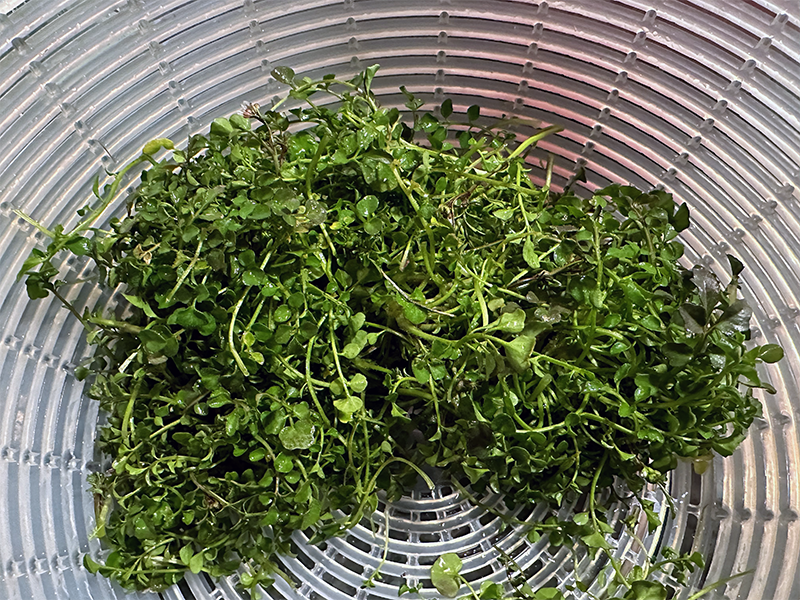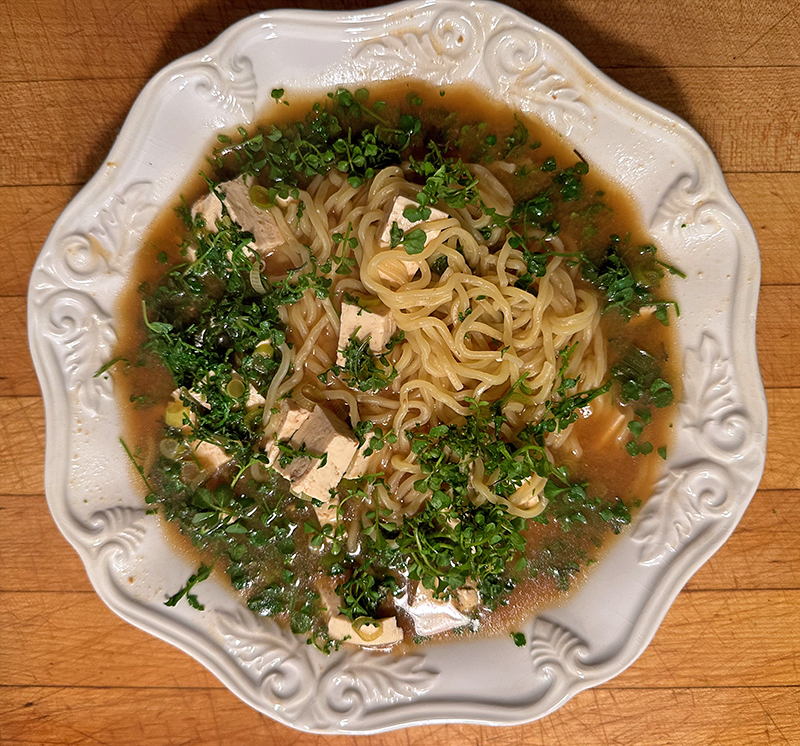I see rosettes of green
In lawns and gardens too
They are healthy food
For me and you
And I think to myself
What a wonderful weed.
Apologies to Louis Armstrong, but the site of Cardamine hirsuta, aka bittercress, in my gardens has me humming happily. This is what happens when you become friends with Ellen Zachos.
The warm winter promoted the growth of hairy bittercress, and I’m seeing it in my vegetable beds, perennial gardens and on the edge of my lawn. Since it’s going to be a few months until I can walk into my veggie garden and ask, “What’s for dinner?” I’m contenting myself with eating this weed. It’s abundant, nutritious, and tasty.

You will find hairy bittercress in any open soil areas, on the edge of lawns or in flower and vegetable gardens. Don’t let the name “hairy bittercress” deter you from trying this…it is neither hairy nor bitter.
Cardamine hirsuta is loaded with vitamin C, calcium, beta carotene, magnesium, and other compounds. And no, it’s not actually bitter. I’d describe it as peppery, and if you like watercress you’ll be right at home with this weed.
Here’s the only thing you need to really pay attention to if you want to eat bittercress: Wash it, wash it, wash it. First pull it out of the ground, then cut off the roots from the rosettes. There will be grit and dirt still on that clump, so put them in a salad spinner and wash it at least three times. In the last bath, fill the salad spinner basket in bowl with water, swish the bittercress around, and then let it sit so that any remaining grit falls to the bottom of the bowl. Rinse.

This is about five rosettes worth of tasty bittercress in my salad spinner. Gold in the early spring garden!
After it’s well washed, snip the tiny stems and leaves off of the rosette with scissors and use in whatever dish you are preparing. In the past weeks I’ve put bittercress in salads, soups, pasta sauces, and on nachos.

Make the nachos of your choice, and once they come out of the oven, add your salsa, chopped avocado, and the bittercress greens.
As I write this blog, I’m itching to get outside and pull some more of this tasty weed. I’m thinking that it might be added to my ramen noodles tomorrow…
UPDATE! Today I used bittercress in my ramen. It was delicious.



0 Comments